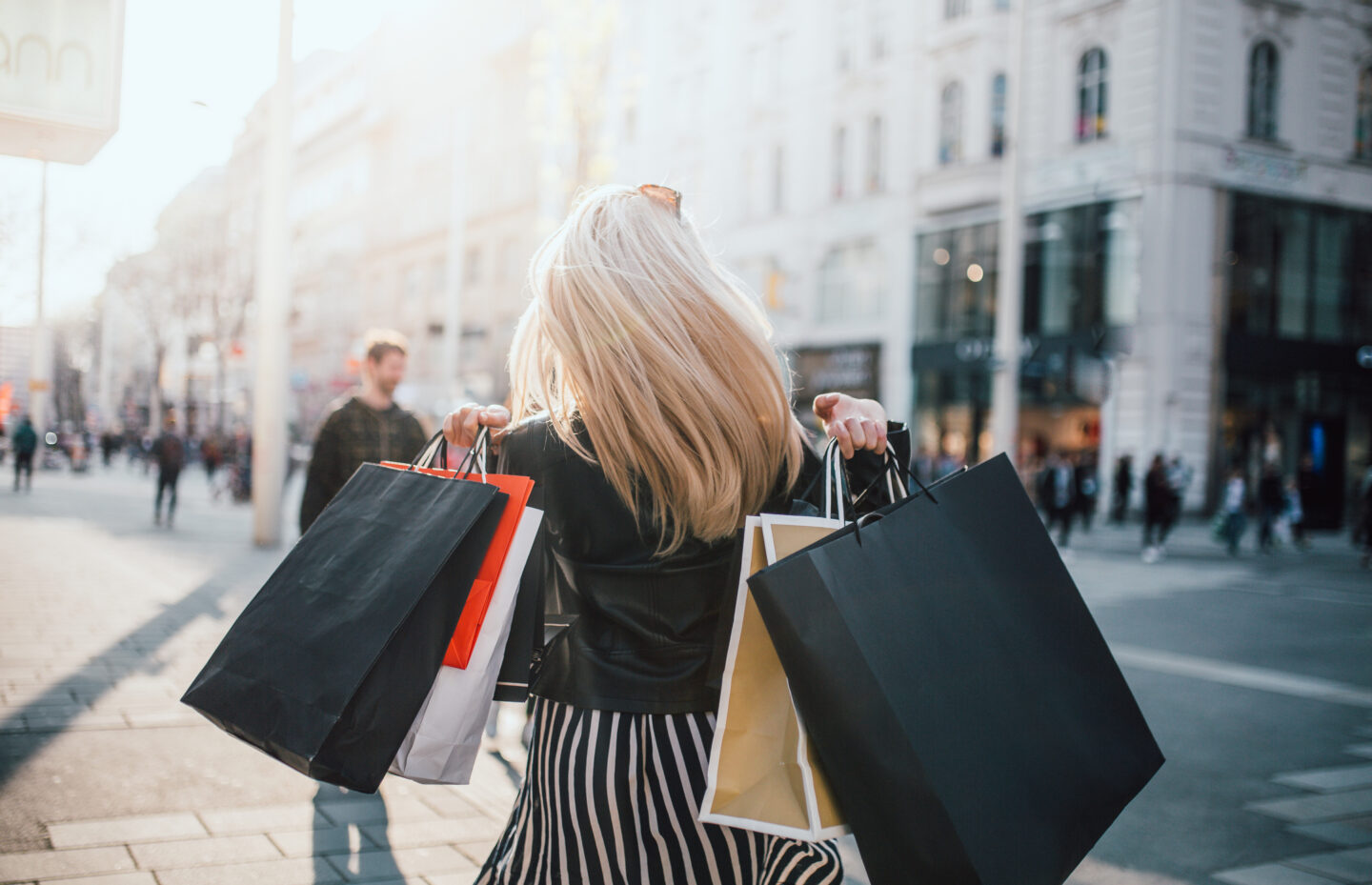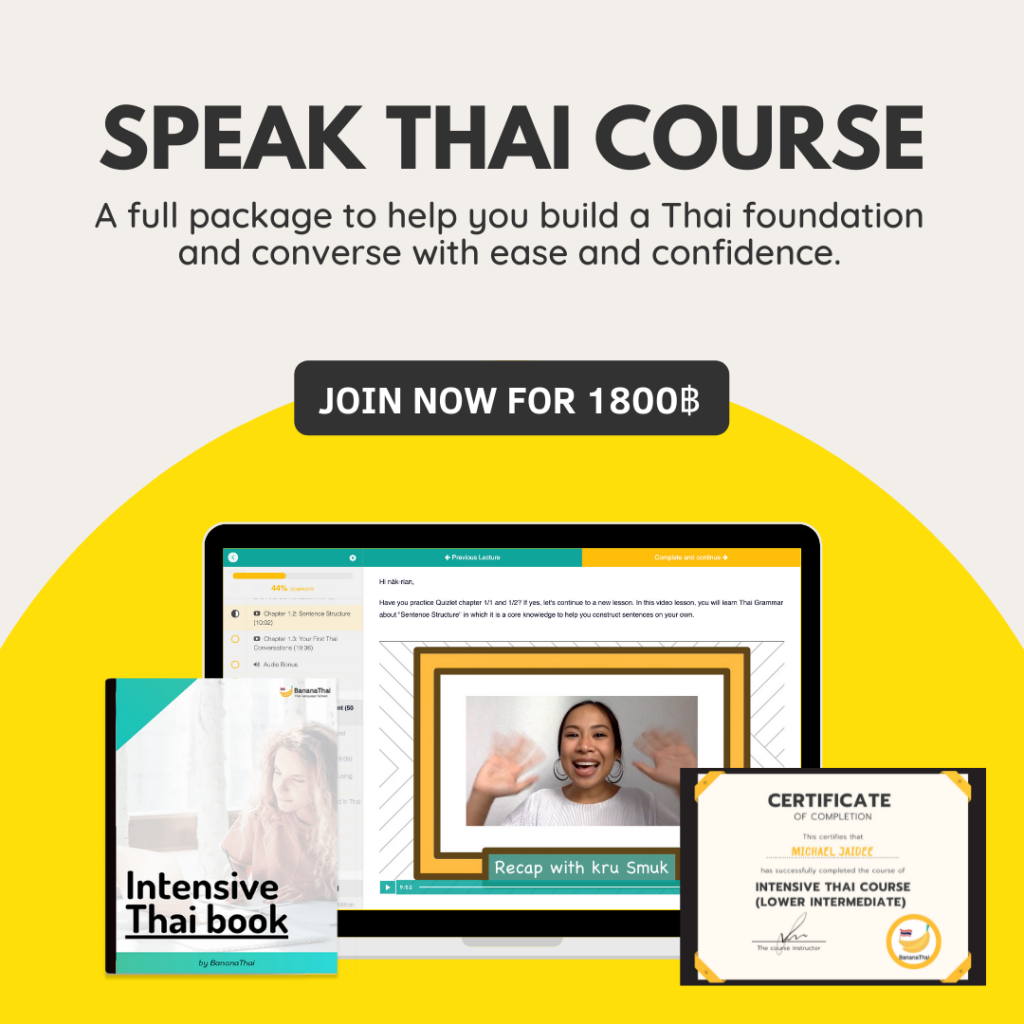One of the most important concept to master Thai is classifier or units of nouns (ลักษณะนาม: lák-sà-nà-naam). This classifier concept is used in daily life especially when you want to tell an amount of things. You need to include the classifier of the noun. This guide will help you go through the important keys of this concept and finally be able to use it in your Thai conversation.
Content Overview
What are classifiers?
Basically, they are words that are used with specific nouns. Each noun has a classifier word. This concept is also applicable in English for uncountable nouns. We usually add a unit of noun when telling an amount of uncountable noun in English.
For example
– A “glass” of water in stead of a water.
– Two “baskets” of vegetables, instead of 2 vegetables.
– A “loaf” of bread instead of a bread.
However in Thai, this concept is applied for both countable and uncountable nouns. So we can conclude that, we always use a classifier when telling an amount of noun. (Hence we also call it a unit of noun)
How to use classifiers?
To talk about a amount of noun
So the Thai syntax to tell an amount of noun is
For examples
1.) หมาสองตัว (mǎa sǒorng dtua) = 2 dogs:
หมา (mǎa) is a noun. สอง (sǒorng) is an amount “2” and ตัว (dtua) is a classifier of dog and animals.
2.) นักเรียนหนึ่งคน (nák-riian nèung kon) = A student:
นักเรียน (nák-riian) is a noun. หนึ่ง (nèung) is an amount “1” and คน (kon) is a classifier of human or person.
3.) ฉันเอาเบียร์สองขวด (chǎn ao beer sǎam kùuad) = I want 3 bottles of beer.
เบียร์ (beer) is a noun, สาม (sǎam) is an amount “3” and ขวด (kùuad) is a classifier as a container of food/drink.
And then you want to ask for an amount of noun, you can use this syntax:
For beginners, you probably learned the word เท่าไหร่ (tâo-rài) as “how much/how many?”, but if you want to speak natural Thai, you better use the word “กี่ gìi”
For example
1.) หมากี่ตัว (mǎa gìi dtua) = How many dogs?
หมา (mǎa) is a noun “dog”, กี่ (gìi) is a question word and ตัว (dtua) is a classifier of dogs or animals.
2.) นักเรียนกี่คน (nák-riian gìi kon) = How many students?:
นักเรียน (nák-riian) is a noun “student”, กี่ (gìi) is a question word and คน (kon) is a classifier of human or person.
3.) คุณเอาเบียร์กี่ขวด (kun ao beer. gìi kùuad) = How many bottle of beer do you want?
เบียร์ (beer) is a noun, กี่ (gìid) is a question word and ขวด (kùuad) is a classifier as a container of food/drink.
To specify a noun
Which dog is yours?
Which dish did you like the most?
Which house is more expensive?
This dog is mine.
I like the last dish the most.
The big house is more expensive.
For examples
1.) หมาตัวไหน (mǎa dtua nǎi) = Which dog?
2.) นักเรียนคนไหน (nák-riian kon nǎi) = Which student?
3.) เบียร์ขวดไหนอร่อยที่สุด (beer kùuad nǎi, aròi tîi-sùd) = Which bottle of beer is the most delicious.
To specify a noun with “the/this/that”, in Thai we use this following syntax with a classifier:
For examples
1.) หมาตัวนี้ (mǎa dtua níi) = This dog
2.) นักเรียนคนไทย (nák-riian kon Thai) = The Thai student
3.) เบียร์ขวดเล็กอร่อยที่สุด (beer kùuad lék à-ròi tîi-sùd) = The small beer is most delicious.
To use with adjectives of quantity
For example,
1.) หมาบางตัว (mǎa baang dtua) = Some dogs
2.) นักเรียนคนไทยบ้างคน (nák-riian kon-Thai baang kon) = Some Thai students.
3. อาหารบางอย่าง (aa-hǎan baang yàang) = Some food
For example,
1.) ร้านอาหารทุกร้าน (ráan aa-hǎan túk ráan) = Every restaurant
2.) แมวทุกตัว (maew túk dtua) = Every cat
3.) เสื้อทุกตัว (sêua túk dtua) = Every shirt
For example,
1.) ครูหลายคน (kruu lǎai kon) = Many teachers
2.) อาหารหลายจาน (aa-haǎn lǎai jaan) = My dishes of food
3.) โทรศัพท์หลายเครื่อง (too-ra2-sàb lǎai krêuang) = Many phones
A list of Thai Classifiers
Here I gathered all classifiers that are commonly used in daily life and grouped them in an easy way to remember.
Common Classifiers
| Human / Person | คน kon | ex. นักเรียนหนึ่งคน (nák-riian nèung kon) = A student |
| Animals / Clothes / Furniture | ตัว dtua | ex. โต๊ะหนึ่งตัว (dtó nèung dtua) = A table |
| Fruits / spherical shape | ลูก lûuk | ex. กล้วยหนึ่งลูก (glûuay nèung lûuk) = A banana |
| Devices | เครื่อง krêuang | ex. โทรศัพท์หนึ่งเครื่อง (thoo-rá-sàb nèung krêuang) = A phone |
| Piece of | ชิ้น chín | ex. เค้กหนึ่งชิ้น (cake nèung chín) = A piece of cake |
| Cars / bicycles / scooters / spoon / fork | คัน can | ex. รถหนึ่งคัน (ród nèung kan) = A car |
| Houses | หลัง lǎng | ex. บ้านหนึ่งหลัง (bâan nèung lǎng) = A house |
| Service units (restaurant, cinema, etc) | ที่ tîi | ex. ข้าวเปล่าหนึ่งที่ (kâo-bplào nùeng tîi) = A unit of rice served |
| Pen, knife, axe | ด้าม | ex. ปากกาหนึ่งด้าม (bpàa-gaa nèung dâam) = A pen |
| Kinds | ชนิด | ex. สัตว์หนึ่งชนิด (sàt nèung chà-níd) = A kind of animals |
Cheat word
If you do not really know the classifier of a noun, you can say อัน (an) for small objects.
For example,
If you want to say “two glasses”, you can say “แก้วสองอัน gáew sǒorng an”. Thai people will surely understand you even though the correct classifier for most of containers is ใบ (bai).
Classifier for food and drinks
The classifiers for food and drinks in Thai are similar to English, we usually use the containers as a classifier.
| Food in a dish | จาน jaan | ex. ข้าวผัดหนึ่งจาน (kâaw-pàt nèung jaan) = A dish of fried rice |
| Food in a bowl (noodles, soup) | ชาม chaam | ex. ต้มยำหนึ่งชาม (dtôm-yam nèung chaam) = A bowl of Tom Yam soup |
| Sauce or food in a small saucer | ถ้วย tûuay | ex. ไอศรีมหนึ่งถ้วย (i-sà-cream nèung tûuay) = A small bow of icecream |
| Food in a box (take away) | กล่อง glàwng | ex. ผัดไทยหนึ่งกล่อง (Pad Thai nèung glòng) = A box of Pad Thai |
| Food in a bag (take away) | ถุง tǔng | ex. ก๋วยเตี๋ยวหนึ่งถุง (gǔay-tǐiaw nèung tǔng) = A bag of noodles |
| Drink in a glass or cup | แก้ว gáew | ex. น้ำแข็งหนึ่งแก้ว (náam kǎeng nèung gâew) = A glass of ice |
| Drink in a bottle | ขวด kùuad | ex. โค้กหนึ่งขวด (Coke nèung kùuad) = A bottle of Coke |
| Drink in a can | กระป๋อง grà-pǎwng | ex. สไปร์ทหนึ่งกระป๋อง (sà-príte nèung grà-pǎwng) = A can of Sprite |
Practical examples
Let’s learn the usage of classifier in practical Thai dialogues.

A: เอาน้ำเปล่ากี่ขวด (ao náam-bplaao gìi kùuad)
= How many bottles of water do you want?
B: สองขวด (sǒorng kùuad)
= Two

A: บ้านคุณหลังไหน (bâan khun lǎng nǎi)
= Which house is yours?
B: บ้านใหญ่ๆหลังนี้ (bâan yài-yài lǎng níi)
= This big house.

A: ในห้องเรียนมีนักเรียนทั้งหมดกี่คน (nai hôorng-riian, mii nák-riian táng-mòt gìi kon)
= How many students in total in the class?
B: มีนักเรียนสามสิบคน (mii nák-riian sǎam sìb kon)
= There are 30 students.

A: วันนี้อยากซื้ออะไร (wan-níi yàak séu à-rai)
= What do you want to buy today?
B: อยากซื้อของหลายอย่าง (yàak séu kǒorng lǎi yàang)
= I want to buy many things.
Summary
Learning classifiers or units of nouns is the must in order to speak Thai naturally. Even though this concept might not exist in your mother’s language, however it can be learned and you can master it with ease and use in your daily life.
If you want to learn more about Classifiers or any fundamental topics of conversational Thai and foundation. Check out the Intensive Thai course. It’s the best online Thai course to get started.



